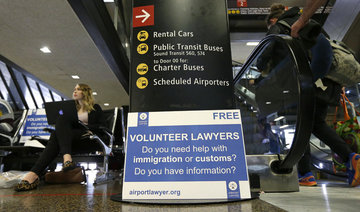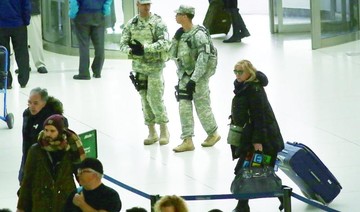PESHAWAR: The government of Pakistan’s northwestern Khyber Pakhtunkhwa (KP) province will recruit a 22,000-strong police force to ensure security in seven tribal districts that were merged last year into the political and legal mainstream of the country, a government spokesman said.
Pakistan’s parliament adopted a constitutional amendment in May last year giving equal rights to millions of people in tribal areas bordering Afghanistan.
The measure has paved way for the merger of the seven tribal districts, which formerly came under the Federally Administered Tribal Areas (FATA), with KP province, nullifying a draconian colonial-era law that had denied people of these areas basic legal rights and prescribed collective punishment against entire tribes for offenses committed by an individual.
“Initially, we plan to recruit 6,000 police, plus a 2,000-strong levy force, for the tribal districts,” Ajmal Wazir, provincial government spokesman, told Arab News in an interview on Saturday, adding that peace and better security were the government’s top priority in the newly integrated tribal districts.
“A committee, to be headed by the chief secretary and inspector general of police, will complete the police recruitment and deployment process,” he said.
For years, insurgents, including the Taliban and Al-Qaeda, were able to use the tribal areas to train and launch attacks in Pakistan and neighboring Afghanistan because the region had no government writ. Over the past decade, Pakistan’s military has launched several military operations in FATA, displacing many people who now live in camps in areas just outside the tribal regions.
Wazir said provincial departments had been directed to draft lists of existing staff and equipment so that the need for additional resources could be determined.
Educated residents in the tribal region would not have as many educational and age requirements for recruitment in various departments, he added.
Wazir said Rehmat Khan Mehsud, the additional inspector-general of police (retired), had suggested using upper subordinate officers from the adjacent areas, as well as tribal youth, for the new police force. He said he was certain the new force would be able to ensure security because locals genuinely wanted peace to prevail.
“The KP government has allocated more than $360 million to promote sports, culture and tourism in the region,” Wazir said, adding that from February, 10 sports activities would be launched throughout the tribal districts to help forge links among all the newly merged areas.
On the economic front, Wazir said Chief Minister Mehmood Khan had ordered revenue officials to identify measures to minimize economic issues faced by tribal residents in the next few months.
“For this purpose, the KP government plans to give interest-free loans worth $7.2 million to tribal youth to enable them to initiate small businesses,” he said.
He said work had been done to build infrastructure in the tribal areas and provide basic facilities like schools, hospitals and drinking water centers damaged in years of conflict.
“We are hiring new employees on an ad hoc and contractual basis at health centers, educational institutions and other departments in tribal districts. Doctors will be given attractive perks and privileges while working here,” the spokesman said.
“The most important development in the latest initiative is the extension of an independent monitoring unit, a supervising body to oversee the working of different departments such as presence of staff in hospitals, educational institutions and other places so that tribal people see a genuine change.”
He said that the process of staff recruitment for the unit would be completed within two weeks. Another committee had also been set up to ensure the implementation of decisions regarding the infrastructure rebuilding in tribal areas and assess the performance of various departments in the newly merged areas, Wazir added.



























